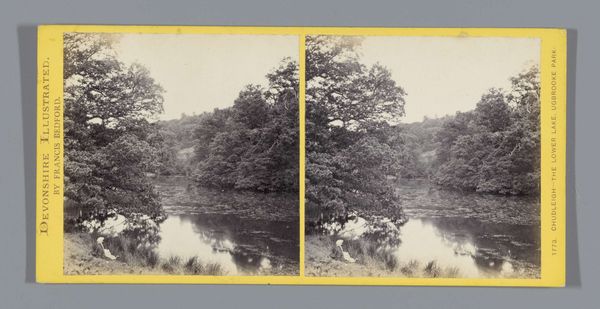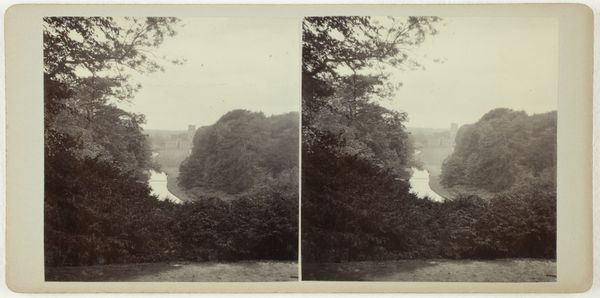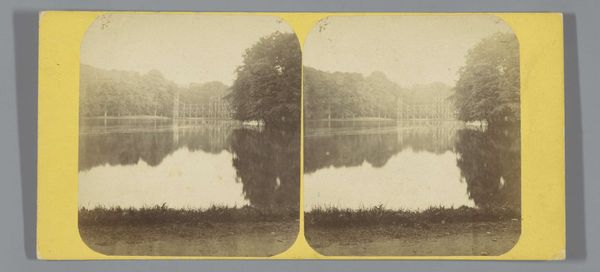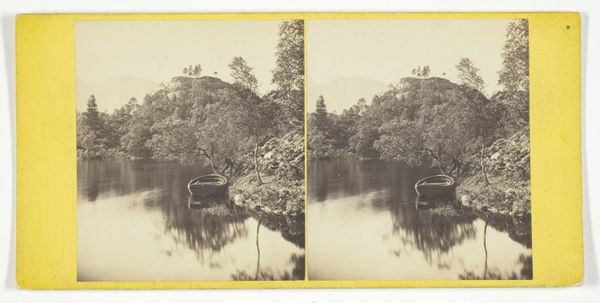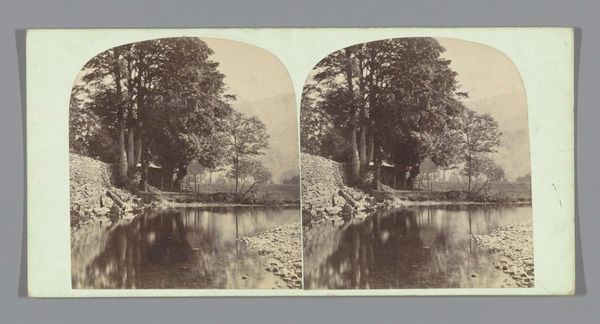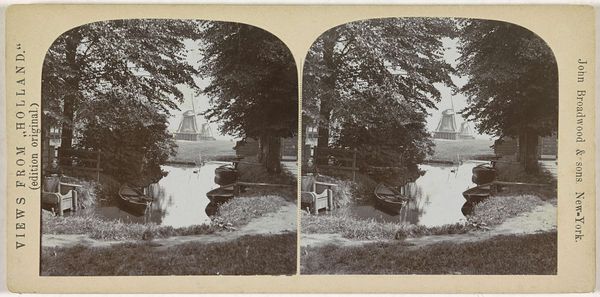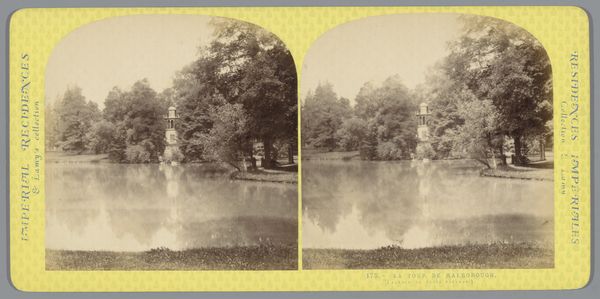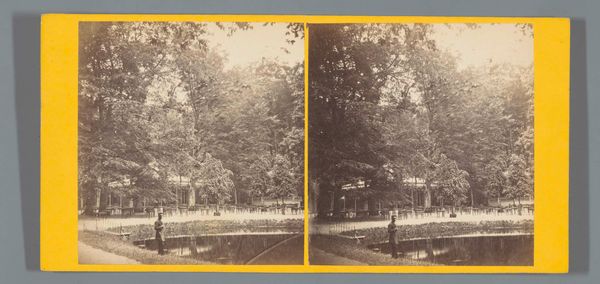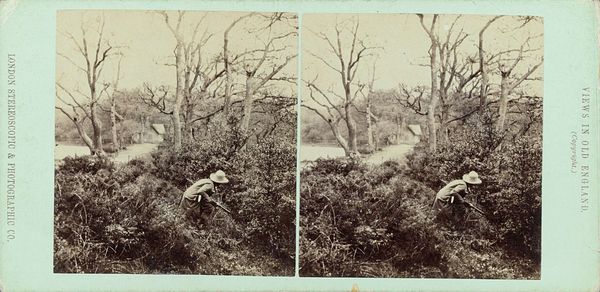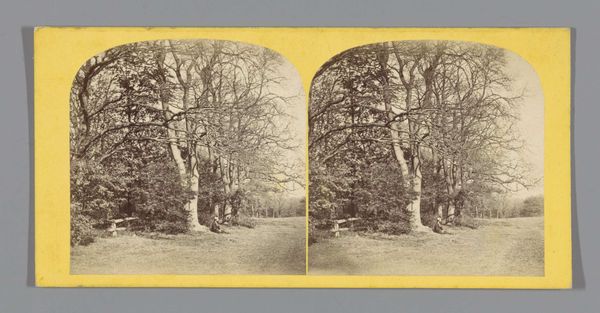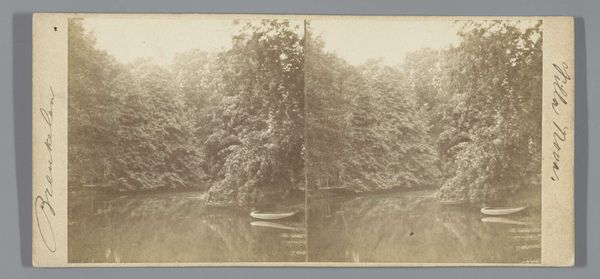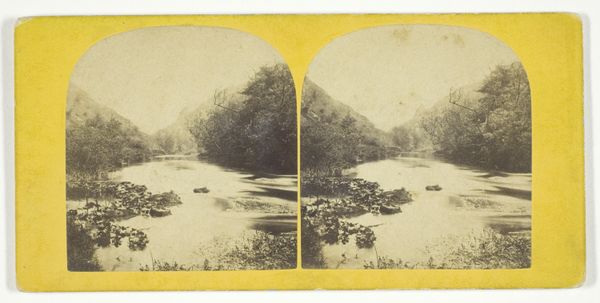
photography, albumen-print
#
impressionism
#
landscape
#
photography
#
albumen-print
Dimensions: height 83 mm, width 170 mm
Copyright: Rijks Museum: Open Domain
Curator: Welcome. Before us, we have Pieter Oosterhuis's, "Gezicht op de vijver in het Haagse Bos," or "View of the pond in the Haagse Bos." This albumen print, a type of early photograph, was created sometime between 1860 and 1885. It now resides here at the Rijksmuseum. Editor: There's something immediately calming about it. The soft, muted tones and the stillness of the water create a sense of serenity. The composition, with the trees reflected in the water, adds a layer of depth and almost makes it seem like an inverted world. Curator: It’s important to consider the social and historical context. Photography at this time was still relatively new. Oosterhuis' work, often landscape photography like this, helped popularize photography as an artistic medium while also creating a visual record of Dutch landscapes for the public eye. Editor: Absolutely. The Haagse Bos itself is crucial context here, too. As a space open to the public – although used very differently by various social classes - it functions in many ways as an escape valve for urban life. It offers access to nature, albeit mediated by aesthetic ideals. I’m intrigued by how Oosterhuis presents a constructed version of nature. Curator: Oosterhuis carefully frames nature. It's idealized and devoid of overt social commentary. Photography's development played a significant role in shaping national identity and cultural memory. Through depicting familiar landscapes like this, artists implicitly contribute to a shared visual understanding of what it means to be Dutch. Editor: Which begs the question, who gets to define this visual language, and whose experiences are represented or excluded? The idealized representation can erase the complex socio-political dimensions of the land, perhaps overlooking issues of access or labor connected to these spaces. The serene representation masks potential underlying inequalities. Curator: Precisely, understanding what this imagery left out—and for whom—allows a broader insight into societal power dynamics. Editor: It invites a fascinating discussion that blends the historical development of photography with enduring concerns around land ownership, representation, and cultural narratives. Thank you for drawing attention to it. Curator: And thank you, for providing an insight that takes into account the broader context.
Comments
No comments
Be the first to comment and join the conversation on the ultimate creative platform.
